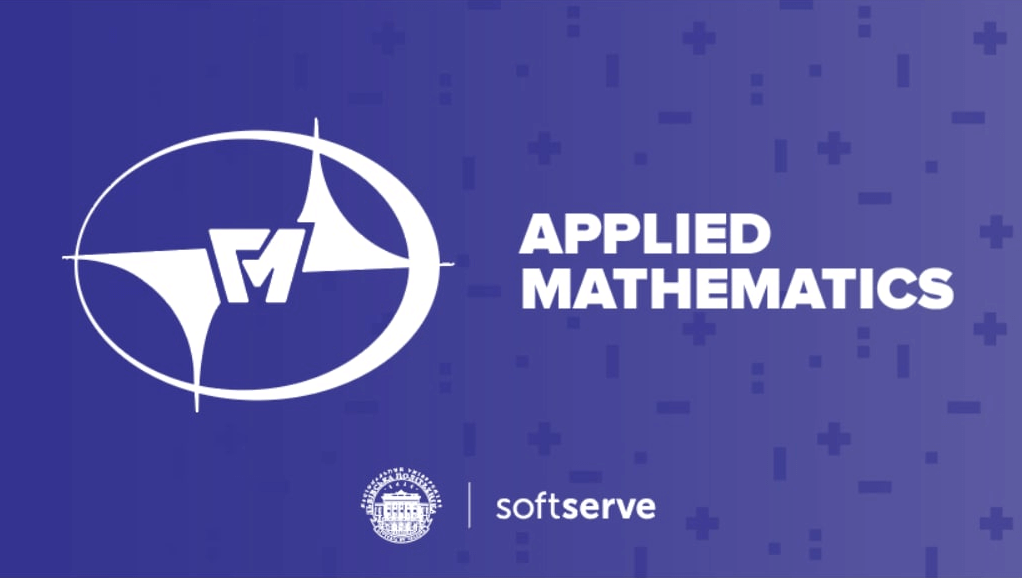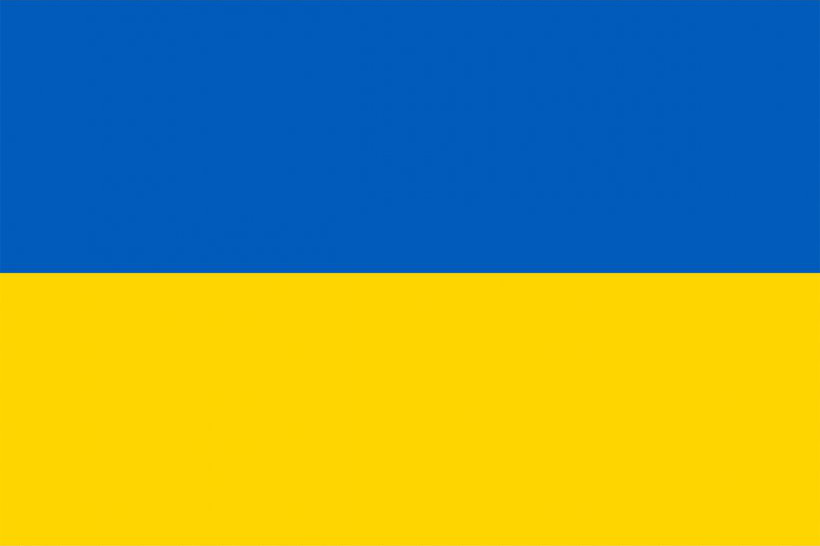Physical Education (Elective), Part 1
Foreign Language for Professional Purposes, Part 1
History of the Development of Mathematics and Computer Science in the Context of Ukraine's Statehood
Algebra and geometry
Matrices and determinants. Cramer's systems of equations. Vector algebra. Lines and planes. Curves and second-order surfaces. Polynomials.
Mathematical Analysis, Part 1
Elements of set theory. Real numbers. Sequences of numbers and their properties. The limit of a function at a point. Continuous functions. Differential calculus of a single-variable function. Taylor and Maclaurin series.
Algorithms and Programming, Part 1
Familiarization with the current state of algorithmic languages development and methods of algorithms constructing as well as software development (C and C++ languages) based on procedural programming paradigm for analysis and research of scientific, technical and mathematical problems.
Physical Education (Elective), Part 2
Foreign Language for Professional Purposes, Part 2
Ukrainian Language (for Professional Purposes)
Discrete Mathematics, Part 1
Familiarizing students with the main sections of courses in set theory and combinatorics, mathematical logic, which are widely used in the design and development of mathematical and software systems for modern computers.
Mathematical Analysis, Part 2
Indefinite integral. Definite integral. Improper integrals. Numerical series with non-negative terms. Numerical series with terms of arbitrary signs. Functional sequences and series.
Algebraic structures
Linear spaces. General linear systems. Linear transformations of linear spaces. Bilinear and quadratic forms. Basic concepts of group theory. Rings. Fields.
Algorithms and Programming, Part 2
Basics of object-oriented programming (C/C++). Standard streams (C/C++). Basics of STL (C/C++). C# and .NET framework. Basics of UML. Design patterns. Other platforms and languages for OOP.
Foreign Language for Professional Purposes, Part 3
Differential Equations
Content of the educational module: Ordinary differential equations of the first order, normal systems of differential equations, differential equations of higher orders, linear systems of differential equations with variable and constant coefficients, dynamic systems, their first integrals and trajectories, stability of solutions according to Lyapunov, asymptotic stability, the method of series for solving second-order differential equations with variable coefficients, boundary value problems, Green's function, first-order partial differential equations, the concept of characteristics, Cauchy problem. As a result of studying the course, the student should know the main types of differential equations and methods for solving them, investigate the correct solvability of the Cauchy problem, the stability of the solution, construct the Green's function for the simplest boundary value problems, and solve linear first-order partial differential equations.
Mathematical Analysis, Part 3
Differential calculus of functions of several variables. Multiple and line integrals. Surface integrals. Vector analysis, Stokes' and Gauss-Ostrogradsky formulas. Fourier series. Fourier transforms.
Selected Sections of Discrete Mathematics
Annotation is being updated...
Дисципліна за вибором
Дізнатися анотацію курсу буде можливо після вибору дисципліни
Mathematical Models of Physical Processes, Part 1
Physical Foundations of Mechanics: Kinematics and dynamics of translational motion, kinematics and dynamics of rotational motion, laws of conservation; oscillations and waves; molecular kinetic theory; thermodynamics.
Web Application Programming, Part 1
Study of the fundamentals of modern internet technologies, their practical use, and application features in the implementation of internet projects and web applications. Practical mastery of modern tools for creating web page markup, including the basics of Bootstrap, JavaScript, jQuery, and TypeScript.
Philosophy
Database and knowledge management
Practical mastery of the concept of relational databases, theoretical foundations and principles of the relational model for working with data, and study of the Structured Query Language (SQL).
Functional Analysis
Metric spaces. Measure theory and the Lebesgue integral. Linear normed spaces. Hilbert spaces. Linear functionals. Dual spaces. Linear operators.
Probability Theory
Annotation is being updated...
Mathematical Models of Physical Processes, Part 2
Electrostatics, electromagnetism (including the Ostrogradsky-Gauss theorem and its applications); fundamentals of Maxwell's theory for the electromagnetic field; optics; elements of atomic physics; elements of nuclear physics.
Web Application Programming, Part 2
Annotation is being updated...
Complex analysis and calculus of variations
Complex numbers. Complex plane and its topology. Numerical sequences in the complex domain. Functions of a complex variable. Differentiability of a function of a complex variable. Cauchy-Riemann conditions. Analytical functions and their properties. Integral in the complex plane. Series of analytical functions. The theory of surpluses and its application. Elements of operational calculus. Elements of calculus of variations
Computer Architecture and Operating Systems
Study of the features of modern computing systems architecture, processors, computer peripherals, and their interaction; understanding of the main trends in the development and fundamental principles of the functioning of computer systems, architectural principles of building and operating systems, data transmission in computer systems and access control, as well as familiarization with modern operating systems.
Basics of Occupational Safety and Life Safety
Mathematical Statistics
Annotation is being updated...
Optimization methods
The course of lectures “Optimization methods” is dedicated to the problem of optimizing the structure and functioning of large organizational and management systems. The course of lectures consists of the following sections: linear programming, elements of duality theory, transport problem, discrete programming, elements of nonlinear programming.
Mathematical Physics Equations
The course is dedicated to familiarizing students with methods for constructing mathematical models of various physical processes, the theory behind these models, and mastering the fundamental methods for their analysis and solution.
Elective Course
The course annotation will be available after the course selection.
Computer Tools for Mathematical Modelling
Using the functionality of Maple and Scilab software packages to solve algebraic equations and systems, approximate functions and experimental data, calculate integrals, find Cauchy and boundary-value solutions for ordinary differential equations, visualize the obtained results.
Cloud Technologies and Computing
It covers technologies for working with cloud solutions.
Numerical Methods, Part 1
Numerical solving systems of linear algebraic equations (direct and iterative methods), convergence investigation of iterative methods. Methods for solving nonlinear equations and systems of nonlinear equations (method of bisection, method of successive approximations, Newton's method, metod of chords). Interpolation and numerical differentiation. Numerical integration (quadrature formulas of Newton-Cotes, Gaussian quadrature), error of quadrature formulas.
Cross-Platform Programming
Platform independence of software. Fundamentals of cross-platform programming technologies in Java. Software for mobile devices. Multithreaded and network programming.
Neural Networks
The course covers the key concepts and methods of modern artificial neural network theory, including types of artificial neural networks, their architectures and learning algorithms, activation functions of neurons, optimization methods, as well as the application of evolutionary algorithms and Reinforcement Learning in the synthesis of artificial neural networks.
Mathematical Foundations of Artificial Intelligence
The course covers modern approaches to the construction and use of artificial intelligence algorithms, as well as the design and development of systems utilizing weak artificial intelligence.
Intellectual Property and IT Law
The concept of intellectual property and IT law. Subjects of intellectual property and IT law. Objects of copyright and related rights. Objects of industrial property. Protection of copyright and related rights in the digital environment. Protection and enforcement of intellectual property rights. Protection of rights to commercial designations on the Internet. Contractual obligations in the digital environment.
Mathematical Modeling of Systems under Uncertainty
Uncertainties and methods of their description. The Monte Carlo method and modeling of random variables. Interval uncertainties and their description. Fuzzy sets and their description. Fuzzy set-based modeling.
Computer Networks and Data Transmission Algorithms
Annotation is being updated...
Optimization Methods (Coursework)
Methods of Solving Linear and Nonlinear Programming Problems (Fibonacci Method, Golden Section Method, Ford-Fulkerson Algorithm). Building Mathematical Models of Transportation Problems in Network Form (Potential Method on the Network). Problems with Boolean Variables (Hungarian Method, Traveling Salesman Problem). Dynamic Programming. Elements of Calculus of Variations: Variational Problems in Parametric Form; n-Dimensional Variational Problems; Relationship Between Optimal Control Problems and Calculus of Variations Problems.
Cross-Platform Programming (Coursework)
Cross-platform compatibility refers to the ability of software to run on more than one hardware platform and/or operating system. This is achieved through the use of high-level programming languages, development environments, and execution platforms that support conditional compilation, linking, and code execution for various platforms. A typical example is software designed to work simultaneously on Linux and Windows operating systems. This is accomplished by implementing the same functionality for each operating system separately. Most modern high-level programming languages can be considered cross-platform. Specifically, C, C++, and Java are cross-platform languages at the compilation level, meaning that compilers for these languages exist for different platforms. This allows—assuming the code quality is adequate—to avoid rewriting the core of the program, with only system-dependent parts needing modification. Equally important for platforms are standardized execution environment libraries. For example, the C language library has become a standard. Among major cross-platform libraries are Qt, GTK+, FLTK, STL, Boost, OpenGL, SDL, OpenAL, and OpenCL. One of the latest examples of cross-platform systems is the new release of .NET Core. It works on Windows, OS X, and several Linux distributions, supporting multiple processor architectures.
Information Security Algorithms in Information Networks
The basic methods of cryptography, the mathematical foundations of information protection using modern cryptographic systems, algorithms for implementing key information protection methods, the computational complexity of cryptographic algorithms, principles of constructing cryptographic systems, and the principles of implementing modern cryptographic protocols.
Operations Research
Formalization and basic principles of Operations Research. Evaluation of strategy effectiveness. Optimal strategies. Key concepts in game theory. The principle of optimality in antagonistic games. Matrix games. Infinite antagonistic games.
Numerical Methods, Part 2
The course introduces students to numerical methods for solving systems of ordinary differential equations, including stiff systems of differential equations and the specifics of their software implementation. It also covers numerical solutions of boundary value problems for ODEs and the development of corresponding mathematical and software solutions on computers.
Random Processes
Annotation is being updated...
Big Data Databases
It covers technologies for working with large volumes of information using business analytics and Big Data.
Generalized and Special Functions
Annotation is being updated...
Data Analysis and Visualization Tools
Annotation is being updated...
Basics of Automata Theory
Annotation is being updated...
Mathematical Foundations of Digital Signal Processing
The course covers the fundamentals of understanding modern approaches to the construction and use of mathematical methods for transmitting and processing digital information, the basics of digital signal processing theory, the application of Fourier transforms and other methods for processing, filtering, transforming, and transmitting digital information, as well as their use in the development of hardware and software systems that perform digital signal processing functions.
Numerical Methods (Coursework)
Annotation is being updated...
Massive Databases (Coursework)
The educational course "Big Data Technologies" covers technologies for working with large volumes of information using business analytics and Big Data.
Regression Analysis Methods and Their Applications
It covers methods of linear and nonlinear regression analysis, the construction and analysis of regression models used for experimental research, and the tools for practically building regression models using computer technologies.
Coursework in the Specialty Discipline (Coursework)
Annotation is being updated...
Internship on the Topic of the Bachelor's Thesis
Annotation is being updated...
Completion of the Bachelor's Thesis
Annotation is being updated...
Defense of the Bachelor's Thesis
Annotation is being updated...
Control Theory
Familiarization of students with the theory of automatic control of linear systems. The course covers the basic concepts and principles of control, mathematical descriptions, and methods for the analysis and synthesis of continuous and discrete control systems.
Artificial Intelligence Tools in Linguistics
Annotation is being updated...
Mathematical Modeling of Systems under Uncertainty
Uncertainties and methods of their description. The Monte Carlo method and modeling of random variables. Interval uncertainties and their description. Fuzzy sets and their description. Fuzzy set-based modeling.
Artificial Intelligence Tools for Image Processing
Annotation is being updated...
Recent news:
See all news

